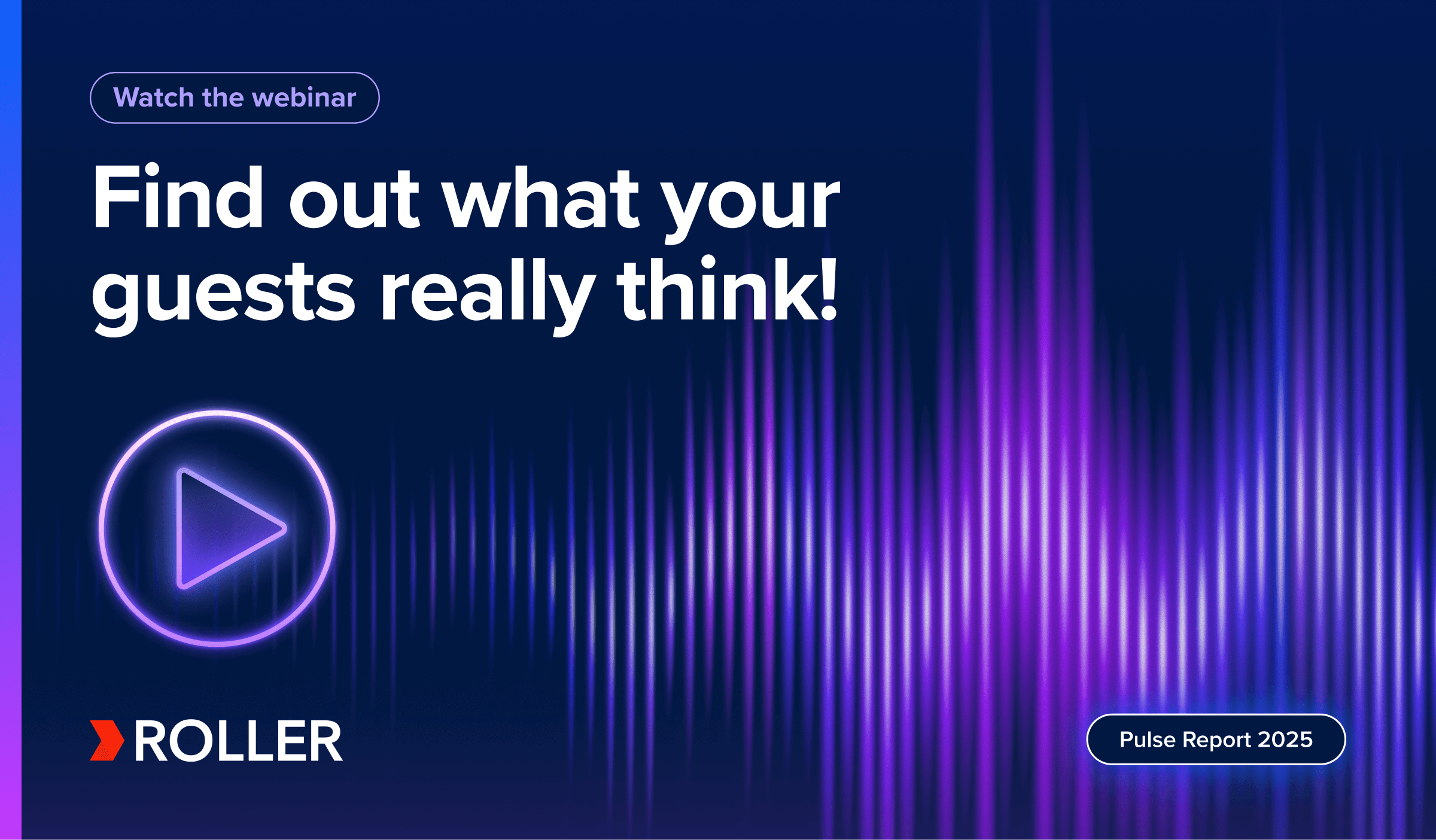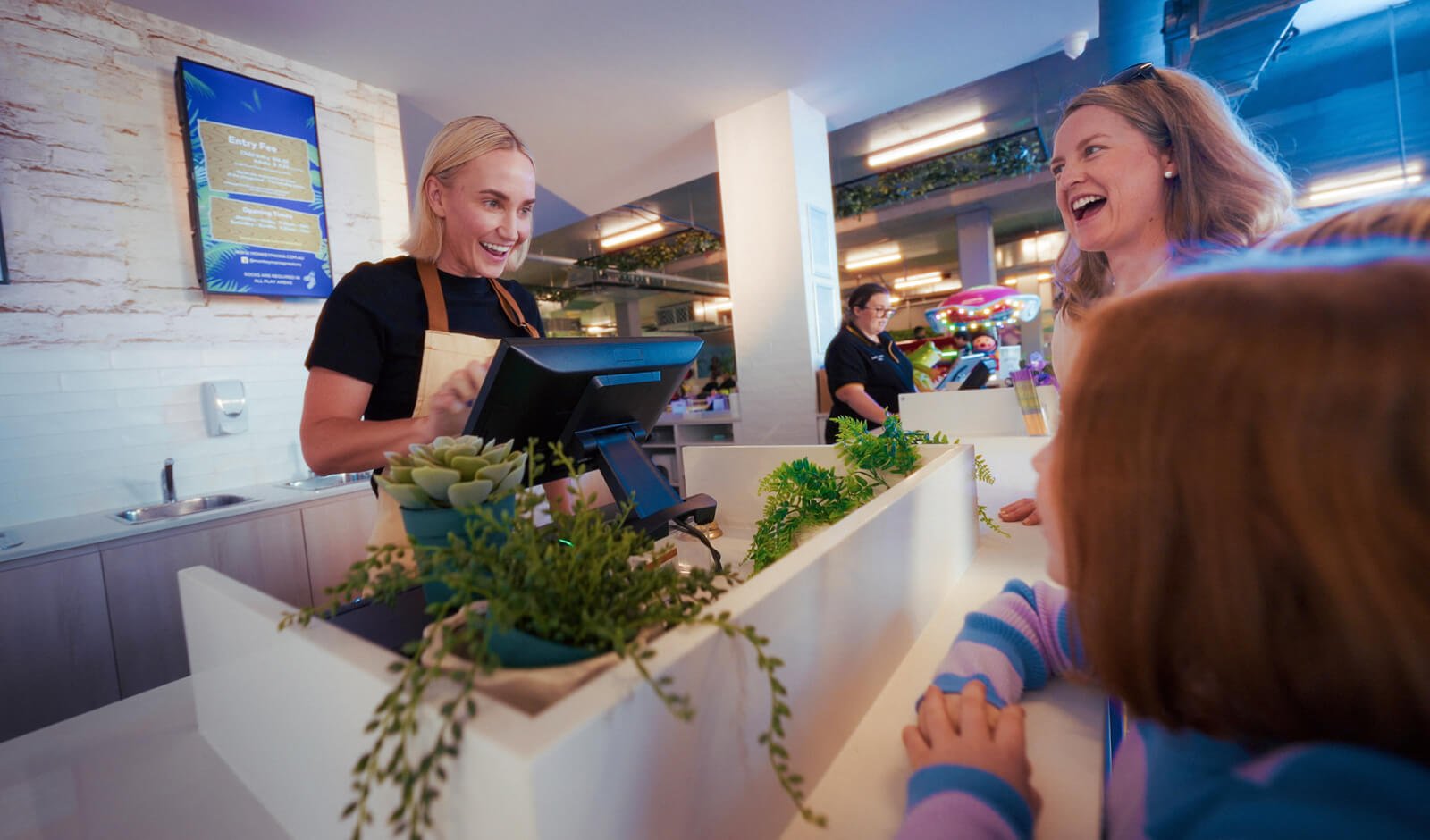What is a Queue Management System? Definition, Benefits & Software
-1.png?width=820&name=Understanding%20%26%20Choosing%20Queue%20Management%20Systems_Social(2_1)-1.png)
While some experiences really are worth waiting for, one of the greatest friction points guests experience is excessive wait times.
Time is money for both you and your guests.
So let’s look at how technology is helping to deliver more seamless experiences and drastically reduce actual wait times for visitors through a queue management system.
What is a queue management system?
A queue management system, sometimes called a queuing system, helps control guest flow into a venue and better manage on-site interactions, ultimately reducing overall wait times.
How does a queue management system work?
Customer queue management systems use software and hardware technology to help manage guest capacity, admissions, and movements within your venue.
Specific functionality might include self-service check-in, appointment scheduling, on-site self-serve kiosks, guest feedback surveys, and reporting analysis.
Timed ticketing helps better manage guest flow
We get it, you want to sell as many tickets at any time as you possibly can. But there are ways you can maximize capacity without running into issues with onsite experience.
For example, managing your venue’s guest flow based on timed increments is a great way to do this. If you run a trampoline park and you regularly sell ‘one hour jump sessions,’ you need to limit the number of people jumping at any one time.
Sounds simple, right?
After all it’s a procedure that helps you meet safety requirements and gives your guests time to properly enjoy themselves.
But managing capacity can be incredibly complex if you don’t have the right tools in place.
Manage guest capacity across the day, week, and month with reporting
Attractions and leisure venues ideally need a smart queue management system with real-time capacity management.
If your venue regularly deals with a high volume of guests, it’s important to be able to check on capacity, especially during busier periods.
With ROLLER’s cloud-based platform you can set capacity limits for each individual space in your venue, and set up product schedules to control when certain products can be sold, ensuring you don't exceed capacity limits just a few clicks.
Dashboard views can also make it easier to see the full picture on bookings and guest numbers, both today and into the future.
And by tracking larger bookings you can stay in complete control, planning ahead for your bigger days.
Increase check-in efficiency with self-serve kiosks
Automation is one of the keys to reducing queuing because it cuts down on manual and monotonous work usually done by your staff.
A self-service kiosk (SSK) allows guests to purchase tickets and sign waivers all by themselves.
And depending on the type of venue you operate, you may also be able to sell add-ons through your self-service kiosk too, potentially further reducing physical queuing and increasing overall efficiencies as well as spend per head.
Where is a queue management system being used?
Queue management systems are used by a range of different industries within the attractions and leisure space, and can be an essential tool for businesses that need to manage the flow of guests around different locations within a venue, such as trampoline parks and FECs.
Most venues use a queue management system to manage online bookings, together with initial entry into a venue. Here’s how some of ROLLER’s customers are improving their guest flow:
Removing friction in the booking experience
Jago Town is an indoor playcenter in Hamilton, New Zealand that offers a range of thrilling attractions for kids, such as rock climbing, jungle adventures, and play equipment.
Before making the switch to ROLLER, Jago Town was operating separate software systems to manage point of sale, ticketing, and memberships. However as they continued to grow they needed a tool that would help manage guest flow related to bookings.
According to Anson Li, Founder and Owner of Jago Town, friction in the booking experience can derail the entire guest relationship before it begins.
With ROLLER he’s found a platform that’s intuitive and straightforward for employees which makes a significant difference in their guest experience.
Without a simple, powerful system in place Jago Town worried their staff would be spending too much time focusing on the transaction rather than spending their resources on delivering a superior guest experience.
Reducing on-site administrative effort by staff
Lollipops Playland, an Australian children’s entertainment center franchise, primarily focuses on group bookings; specifically birthday parties.
Before using ROLLER their guest flow was tied up in a significant amount of administrative effort, with too many functions done by pen and paper.
Not only did this leave room for manual error, but there was no system for scheduling time slots and sessions which created headaches for staff. Since coming to ROLLER processes have been streamlined for both guests and staff.
Creating different ticketing options to manage attendance
We’ve already touched on the importance of ticketing types for effective queue management.
And one of ROLLER’s customers that is doing this well is the Museum of Play and Art (MoPA), a children’s museum located about an hour’s drive from Melbourne, Australia.
MoPA sells a variety of ticket options based on age and the time of day guests intend to visit. Guests can purchase tickets for infants, children, adults, and seniors, and can specifically reserve for a morning, mid-day, or late afternoon event.
This allows MoPA to manage attendance and capacity, rather than non-specific ticket times that may end up with large crowds arriving simultaneously.
Integrating operations into one easy to use system
Urban Planet Jump, a trampoline park group based in Spain, offers various on-site attractions.
But it struggled with a previous queue management software that was used to try and run their venues. Because online bookings and POS were also in different systems Urban Planet Jump found it difficult to manage guest capacity.
ROLLER integrated their operations into one system, eliminating the need to manually manage guest capacity across different platforms.
Another ROLLER feature, digital signing of waivers, saves time when people arrive on-site, helping to avoid unnecessary queuing.
How are different industries using queue management systems?
Any industry that relies on customer satisfaction or guest interaction is likely to be using a type of queue management system, whether that’s integrated into a customer facing website or app or is a physical example such as a self serve kiosk.
Here’s how some different industries are using queue management:
Multiple solutions streamline the travel experience at airports
There’s possibly no worse queuing experience than waiting at the airport!
Thankfully for travelers, airlines and airports have embraced multiple types of queue management solutions to prevent bottlenecks and reduce poor customer service experiences.
And while it's still not perfect – with some reliance still on physical management via belt barriers – through a combination of online bookings, customer apps and on-site self-serve kiosks you can now move faster through the travel experience including self checking-in for flights, checking-in luggage and managing seating.
Real-time monitoring helps keep supermarket queues moving
Retailers such as supermarkets know the importance of avoiding large queues at the checkout – it can reduce store footfall and lower average transaction values.
Having pioneered the use of self-serve checkouts, supermarkets are now using predictive queue management technology with sensors placed at store entrances to more accurately predict and monitor queuing in real-time.
Staff can then be better utilized during key times improving the customer experience.
More efficiently directly customer queries in banking branches
While the banking industry has largely embraced digital transformation through apps, you’ll find ticket-based queue management systems in branches via self service kiosks to help provide a more engaged and efficient bank service to customers around specific queries and actions.
Customer feedback surveys captures post visit interactions for attractions
You might not immediately think of surveys as a way to manage queuing but it can highlight unforeseen friction points in your guest journey, giving you insight on where to improve.
And according to leading customer journey management solution provider Qmatic, queue management should manage the waiting experience throughout the entire customer journey.
Even small improvements could lead to further decreased waiting times. To get started, check out ROLLER’s Guest Experience Score, a free sentiment analysis tool that helps you collect, analyze and action guest feedback at scale, helping your team to action feedback quickly and do more of what’s working well.
5 best queue management systems
1. ROLLER: Best for leisure and attractions venues
ROLLER’s all-in-one cloud-based guest experience platform includes features to specifically help the attractions and leisure industry better manage guest queuing, ultimately delivering a better guest experience and greater operational efficiency.
Features
- Online ticketing
- Digital and mobile device waiver management
- Self-serve kiosks
- Reporting
- POS
- Parties and group bookings
- Guest feedback
Industries
- Trampoline parks
- Playcenters
- Wake and aqua parks
- FECs
- Water parks
- Roller skating
- Rock climbing
- Zoos
Pricing
From $USD200 per month
2. Qminder: Best for large retail
Qminder is a cloud-based queue management platform that lets customers queue up remotely using their mobile phones and get notified via text messages. The data captured during customer self-check-in helps you provide more personalized service.
Features
- Digital signage
- Text messaging chat with customers and customizable sign-in flow
Industries
- Retail
- Finance
- Healthcare facilities
- Education and government offices
Pricing
Starting at $429 per month
3. Qmatic: Best for hospitals
Qmatic is a customer journey management solutions business that offers queue management solutions across a range of industries and organization sizes.
Features
- Appointment management
- Virtual queue management
- Automated notifications
Industries
- Healthcare facilities
- Finance
- Retail
- Public sector
Pricing
Available upon request
4. NEXA: Best for government departments
NEXA provides solutions for streamlining the customer journey, with a range of queue management tools for more efficient customer flow.
Features
- Appointment scheduling
- Digital signage
- Virtual queue management
Industries
- Government
- Healthcare facilities
- Education
Pricing
Available upon request
5. Waitwhile: Best for smaller retail venues and service businesses
Waitwhile aims to eliminate wait times through its suite of queue-eliminating products. Guests can join a virtual waitlist from a smart device, instead of physically standing in long lines.
Features
- Queue management automation with AI-powered estimation times
- Operational data and insights
- Integrations
Industries
- Small service-based business such as barbershops and mechanics
- Hospitals
- Universities
- Events
Pricing
- Freemium
- Paid starting at $49 per month
Queue management is one of the best ways to increase overall guest satisfaction
Guests want to feel valued the moment they interact with your brand.
And while waiting times will always be a part of venue management, taking innovative approaches to improve that experience will be noticed and appreciated by your guests.
With the right queue management features for your industry, you’ll be able to see real operational enhancements for both your guests and your staff in addition to just reducing physical lines.
Related articles


2025 Pulse Report Webinar: Operators Unpack the Guest Insights

Indoor Playground Software Buyer’s Guide: How to Compare POS Systems and More
Enhance your guest experience
Get free education, tips and inspiration to help you run a successful venue.